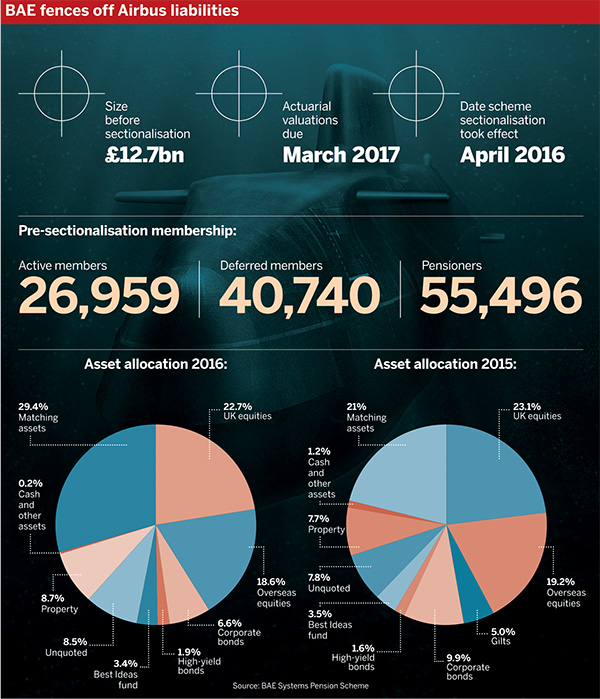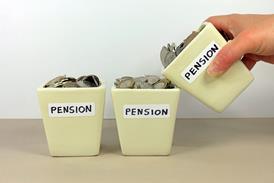British defence giant BAE Systems has created a new scheme section for Airbus employees, to increase transparency while giving direct responsibility to the companies involved.
The BAE Systems Pension Scheme is not the only large fund to have undergone sectionalisation in the past year: National Grid told members in June 2016 that it would be splitting its pension scheme into three independent sections to protect benefits and facilitate the employer’s sale of a majority stake in its gas distribution business.
Members of the BAE scheme were told the scheme was sectionalised “into an Airbus section and a BAE Systems section, with all members allocated to one of the sections and the scheme assets split accordingly, taking into account the allocation of the membership”.
There is only one thing worse than having expensive DB legacy exposure for your former employees, and that's having the exposure for another company's former employees
Alex Waite, Lane Clark & Peacock
A scheme spokesperson confirmed that the sectionalisation was completed in 2016. As a result, members have been informed that there will be two actuarial valuations at March 31 2017, one for each section.
Increased transparency
The trustees, BAE Systems and Airbus came to the decision on the sectionalisation because “it gives the companies direct responsibility and increased transparency for the funding of the benefits for their members”. Scheme benefits are not affected by the structural change.
Airbus in the UK used to be part of BAE Systems, but since 2007 the two companies have operated separately. Airbus employees continued to be members of the BAE Systems Pension Scheme. The fund said that “this was an unusual arrangement that has been brought into line with market practice by sectionalising the scheme”.
Before the scheme restructuring, the £12.7bn fund had a total of 123,195 members. The size of the new Airbus section has not yet been disclosed.
Alex Waite, partner at consultancy LCP, explained that one important advantage of sectionalisation is that each company is responsible for its own liabilities.
“There is only one thing worse than having expensive DB legacy exposure for your former employees, and that’s having the exposure for another company’s former employees,” he said.
Merging completely separate schemes to improve efficiency in terms of investment and management is more common, with the government’s recent green paper on DB sustainability exploring consolidation.
When it comes to sponsors, if there are either weak or unequal covenants, the trustee should think carefully about whether they are unduly favouring one group over another, he said.
“Imagine that company A and B are separating, and former employees of company X are split to be supported by either A or B, on an arbitrary basis. But then three years down the line, company A goes bust and some pensioners lose out – one of those pensioners may well ask why the trustee didn’t attribute them to company B,” Waite explained.
National Grid goes ahead with new scheme sections
National Grid has decided on the section allocation of scheme members after agreeing on the creation of three independent sections within the National Grid UK Pension Scheme earlier this year.
Richard Farr, managing director at covenant specialist Lincoln Pensions, said that sectionalisation allows “companies to reorganise, separate, join up and move around and not be tied down by this big amorphous one scheme” he said. “So by sectionalising the scheme into the appropriate bits, its company can see where its liability is.”
Orphan liabilites
Farr noted that “the big issue” comes down to orphan liabilities, which is when scheme liabilities are not attributed to any particular employer.
“If you try and sectionalise those liabilities to a weak company, or a company that’s not linked to the orphan [liabilities] from the past, the trustees get a bit nervous,” said Farr.
One of the ways in which this problem can be solved is to provide mitigation, which could come in the form of a guarantee or cash. At that stage, “it’s pure negotiation”, Farr explained.
He said when considering sectionalisation, trustees need to ask why it is being done, and “if it benefits the other side: where’s their piece of the action?”














